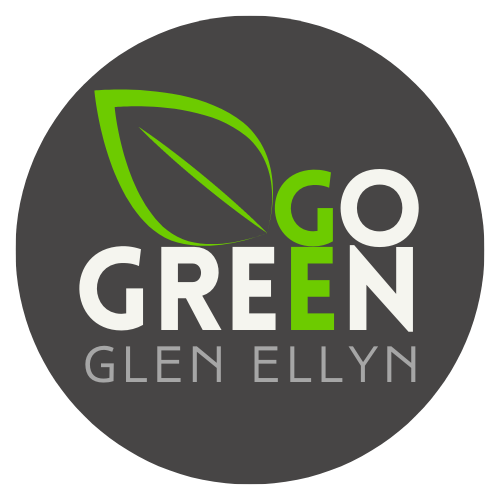Why native plants?
by Karin and Jac
It’s planting season in Illinois - the time we have waited for since we put our garden to bed in the late fall and that we dreamed about in the cold of winter! So let’s head to the garden center and….STOP RIGHT THERE! May we suggest changing up your garden this summer with some native plant species? Learn why native plants are great for your garden and the planet!
Native plants might be something that sounds complicated, but it’s not as daunting you may think. They are generally defined as plants share 3 common elements:
They have evolved naturally
Native perennials are beneficial as they know and love our weather, our soil as well as our local animals and pollinators. They put out deep roots that help them survive drought, and prevent erosion. These deep roots help the soil by improving infiltration, increasing carbon sequestration which benefits other plants and organisms. Natives have flowers that local species rely on to survive. They need less water, chemicals and fertilizer (particularly if you use some plant-loving compost!) Native plants also save money in the long run as they keep popping up, year after year! That’s a win-win-win!
They are integral in a location
There are a group of native core plants and trees called “keystones.” You may know keystone in architecture as that stone at the top of an arch that holds the other stones in place. That is what a keystone plant is – a plant that is essential to an ecosystem because it provides support to other organisms (plants, insects, bids, animals, people!).
They have developed without human intervention
Plants which are native to our area existed here before European settlers arrived! Urbanization (and suburbanization!) has taken a toll on our local biodiversity. That lack of biodiversity (think green, manicured monoculture lawns and ornamental non-native flowers) has negatively impacted our local ecosystems, making it difficult to support wildlife. BUT, we have the power, garden by garden and yard by yard, to make an impact by improving biodiversity in our own backyard when we incorporate some native plants. This is where, by "greenies law," we have to stop and recommend the inspiring book which explores this idea, Nature’s Best Hope by Douglas Tallamy.
So how do you get started?
So here is your challenge. If you have not yet gotten into native plants, choose just one this year. Below are a list of nurseries and upcoming plants sales, plus you can also ask at your favorite garden center.
How to choose? The best way to start is to get the most bio-bang for your buck and choose a keystone plant, shrub or tree. Homegrown National Park has a list of plants (and yes, they can be put in containers!) and shrubs/trees that are considered keystone for our area. There are other resources listed below. Consider height (some native flowers are VERY tall), and your sun/shade as well as dry/wet soil conditions.
If you have already started planting natives, hurray! This year, add a few more. The list of native plants, shrubs, and trees is wide. We list some of our favorite resources below.
Learning more and getting certified The Conservation Foundation’s Conservation@Home program is a wonderful local resource. They will visit your home and provide advice on what will grow best in your yard. Once you've installed some plants, you can have your yard certified for using earth-conscious choices in landscaping. Both Jac and Karin have had their yards certified. Learn more about this program here, and you can show off your sign to help spread the word!
Don’t have a green thumb or lack the time? First, native plants are a lot more “set and forget" than annuals (once established), but there are landscapers who will help nurture your native vision, and also utilize greener means of maintaining your garden and lawn. Here is a list from Wild Ones of DuPage to get you started. Jac has also worked with Kori and Bryan Kasper from Branch Gardens and was really happy with the plants (and even more happy for the help)!
Ready to get planting? Choose to plant a keystone native plant or shrub/tree this spring! Keep us posted with your native pics. Send to info@gogreenglenellyn.org or tag us on social. Go Green and Go Native!
Native Plant Resources
Homegrown National Park book by Doug Tallamy (as previously mentioned)
Illinois Native Plant list from the IL Dept of Natural Resources
Morton Arboretum has an excellent database of plants, trees and shrubs.
University of Illinois College of Agricultural, Consumer & Environmental Sciences (aka Illinois Extension) is a rich resource of information
Wild Ones are dedicated to education about native plants here in DuPage
DuPage Monarchs where you can learn how to create a Monarch waystation in your own backyard
Nurseries
Possibility Place Nursery. With a very resourceful website, this is the nursery where the GE Park District sources their native plants for their fall annual sale (and for their beautiful gardens). You can order plants through the mail, visit their retail shop in Monee (limited times), or look for their partnerships with nonprofits like the Conservation Foundation.
Prairie Wind Native Plants. Run by our Go Green Glen Ellyn friend, Bruce Blake, who is a wealth of knowledge about local native species!
Prairie Moon Native plants. Based out of MN, they are considered one of the best sources for native Midwestern plants.
Here is a great list of native plant nurseries from Wild Ones
